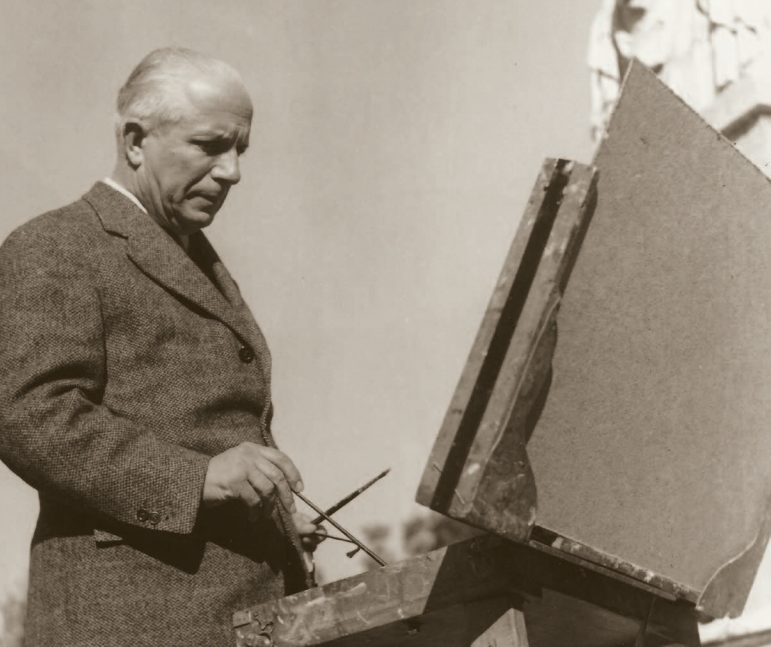
Evaluation Carlo Quaglia
Carlo Quaglia Valuations - Want to sell a Carlo Quaglia piece? Request a complimentary and confidential valuation!Colasanti Casa d'Aste will review your submission and offer a free-of-charge estimate, if your item is suitable for our auctions.
biography
Carlo Quaglia was born in Terni on April 17, 1903. He graduated in accounting and studied violin at the Bricciardi Music Institute, later earning a degree in Economics and Commerce from the Academy of Modena. In 1934, he was sent as an officer to Libya, where he developed his passion for visual arts and classical music. In 1940, during World War II, he was captured by the British and deported to the Yol prisoner camp in India, where he spent five years painting portraits of fellow prisoners and landscapes. Upon returning to Italy, he fully dedicated himself to painting, approaching the tonalism style of the Roman School.
In 1947, he held his first solo exhibition at the Il Cortile Gallery. In 1948, he participated in the 24th Venice Biennale and the Rome Quadriennale with the work "Still Life." During the 1950s, he increased his exhibition activity, taking part in major events such as the 25th Venice Biennale, the 2nd Terni Prize, and the 6th Rome Quadriennale. In 1952, he exhibited in Paris at the Silvagni Gallery with the show "Landscapes of Rome and Venice," and in 1954 he was admitted to the 36th Venice Biennale. In 1955, he obtained a painting professorship at the Academy of Rome for foreigners.
His works mainly focus on landscapes, still lifes, and some portraits, with a special emphasis on views of Rome, a city that inspired him deeply. Although his career was relatively brief, it was marked by critical and public success, establishing him as one of the most notable Italian painters of his time. Carlo Quaglia passed away in Rome on March 4, 1970.
In 1947, he held his first solo exhibition at the Il Cortile Gallery. In 1948, he participated in the 24th Venice Biennale and the Rome Quadriennale with the work "Still Life." During the 1950s, he increased his exhibition activity, taking part in major events such as the 25th Venice Biennale, the 2nd Terni Prize, and the 6th Rome Quadriennale. In 1952, he exhibited in Paris at the Silvagni Gallery with the show "Landscapes of Rome and Venice," and in 1954 he was admitted to the 36th Venice Biennale. In 1955, he obtained a painting professorship at the Academy of Rome for foreigners.
His works mainly focus on landscapes, still lifes, and some portraits, with a special emphasis on views of Rome, a city that inspired him deeply. Although his career was relatively brief, it was marked by critical and public success, establishing him as one of the most notable Italian painters of his time. Carlo Quaglia passed away in Rome on March 4, 1970.


